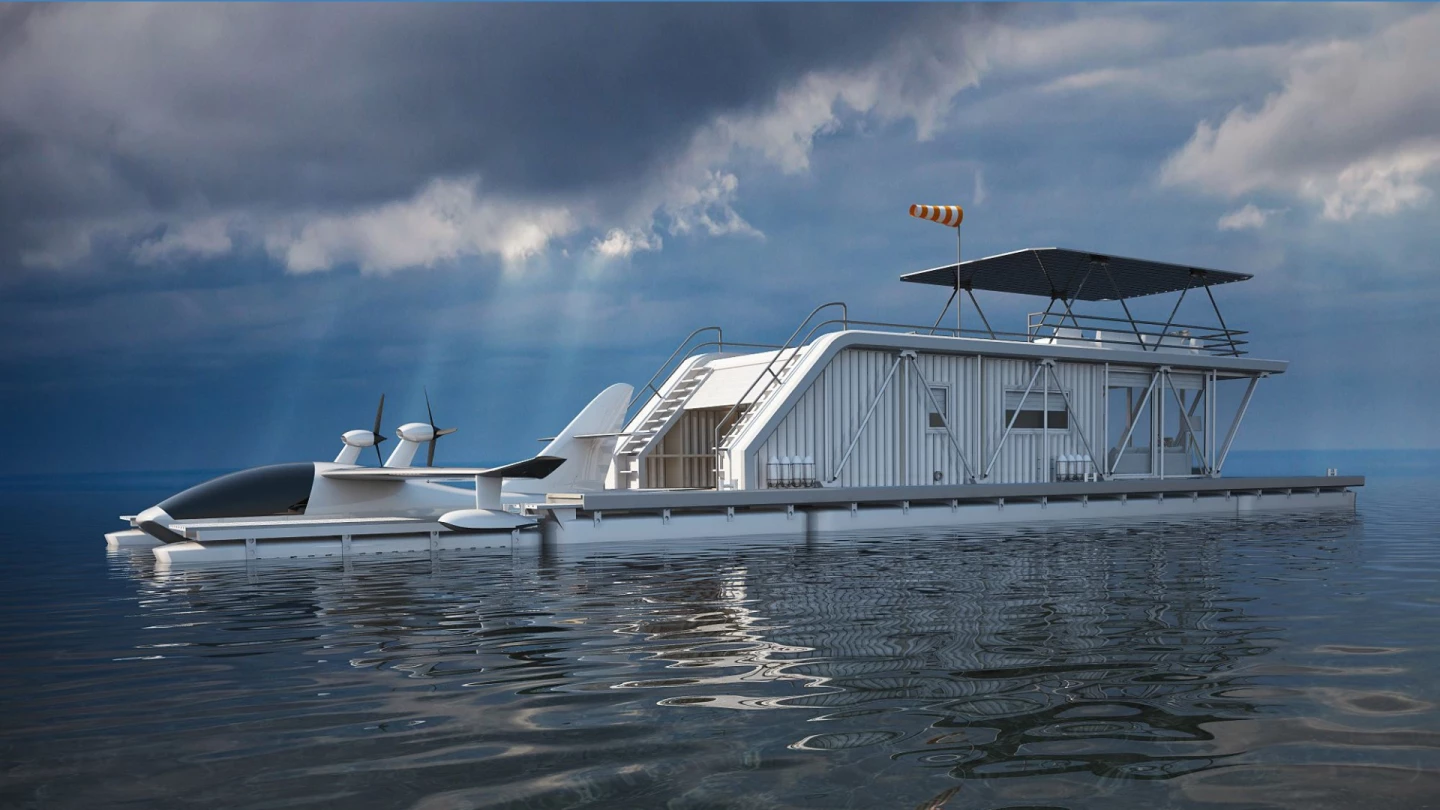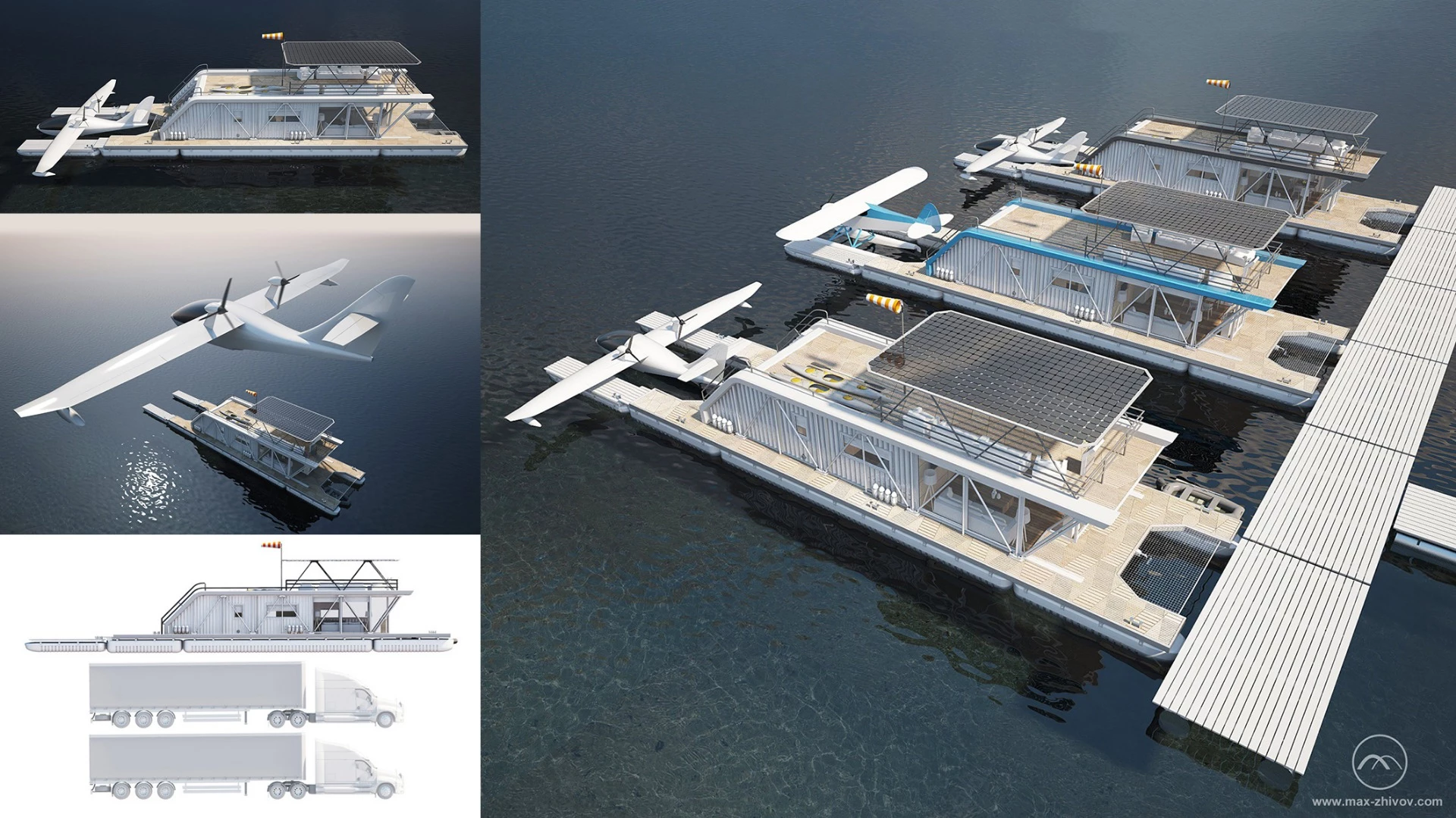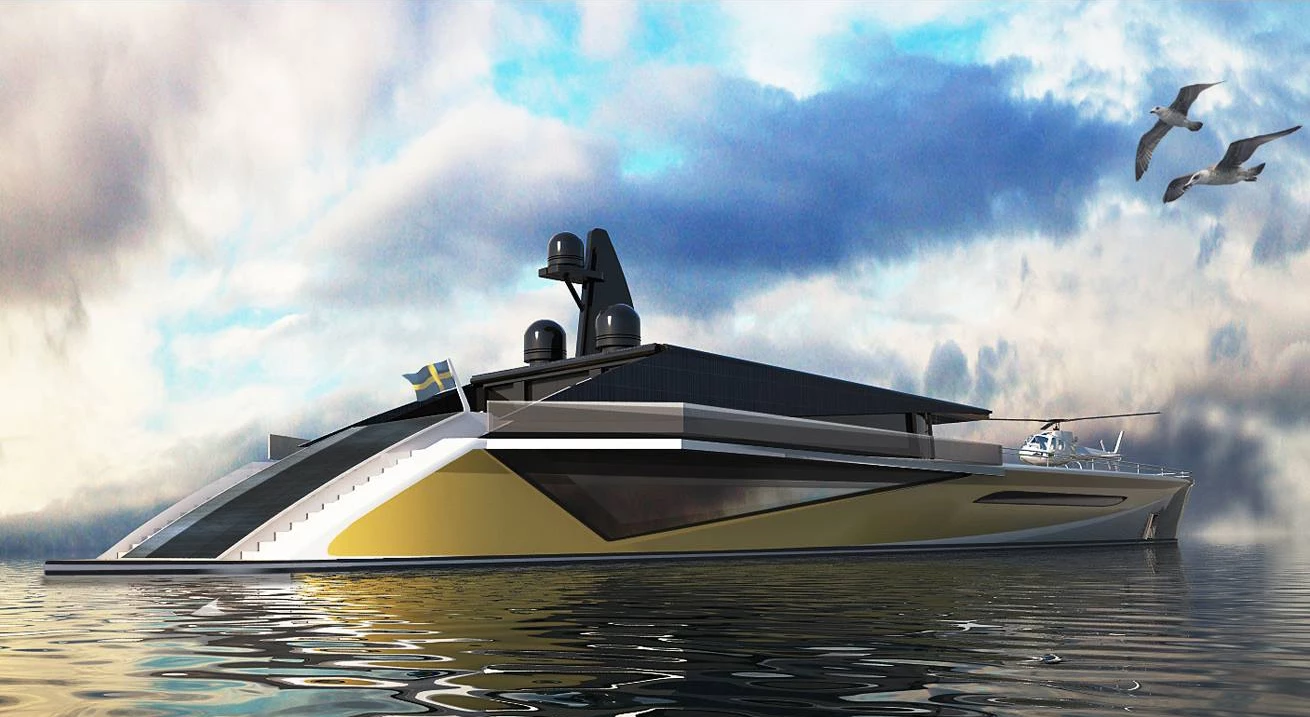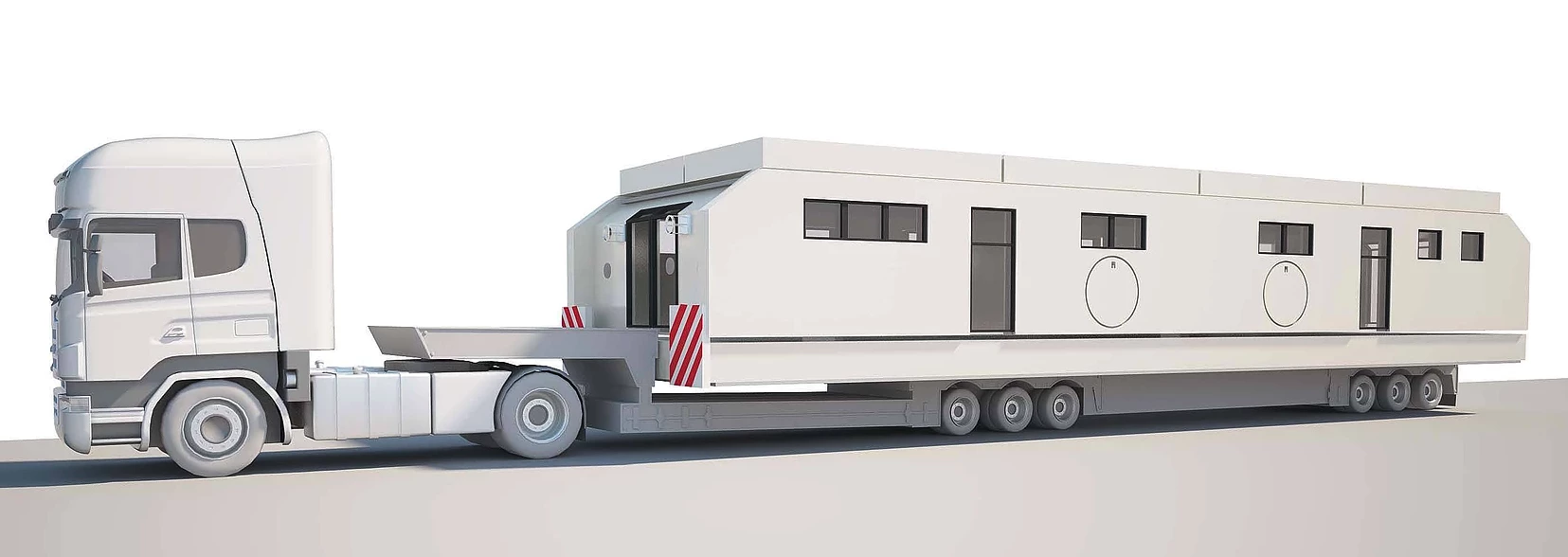It's really quite astonishing that more research and development isn't being done in the area of water-borne housing: 71 percent of the Earth's surface is water, the world's already overcrowded population will grow from 7 to 9 billion in the next 20 years, 75 percent of the world's megacities are on the water ... the numbers all point towards greater utilization of water as the basis for housing in prime locations.
Throw in the spectre of global warming submerging the most valuable terra firma first, and the fact that there are countless architects exploring the possibilities of sustainable living environments on land ... and houseboats make more sense with every passing day.
Perhaps because of the deeply personal nature of one's home, housing design is one of the great engineering art forms and the combination of designer Maxim Zhivov and the Baikal Yacht Group has been comprehensively exploring this area for some time.
It's not often that naval architects think way outside the box, and even less common for major shipyards to follow that lead, but when Zhivov and Baikal Yacht Group came up with the HydroHouse, they were clearly exploring new boundaries.

The HydroHouse is a combination houseboat, dock and seaplane mooring, and the entire thing is transportable by truck, meaning that it really does offer a relocatable lifestyle for pilots and water enthusiasts.
Zhivov's resume is chock full of ideas that transform the houseboat concept to offer more than one primary benefit, and many of his designs in his short career have centered around houseboats that offer particular lifestyles, or are particularly suitable for a specific lifestyle.
At least part of the inspiration for the HydroHouse comes from one of his previous concepts, the Houseboat Moon, a houseboat for long term accommodation that doubles as a relocatable wharf.

The size and modular construction of the Houseboat Moon were created so that the houseboat could be easily transported via truck.

Originally designed for living on the Volga River near Samara in Russia, the ability to put the entire unit onto a semi-trailer and transport it elsewhere on public roads without the problems associated with wide loads, is obviously a significant factor in the flexible usage of the Houseboat Moon, and hence the subsequent HydroHouse, because it too can be trucked to the location of your choice. The layout of Houseboat Moon may not appear all that large from the images, but it contains a master cabin, three guest cabins, a kitchen and two toilets.

Another of Zhivov's eccentric but practical combinations was the Concept entitled YOUR YACHT YOUR HOME which, as you might have guessed, combines a yacht and a home. From directly astern, the concept looks more like a cottage than a yacht, yet from the front it looks more like a cigarette boat. The project uses a lot of thin-film solar panels to absorb as much energy as possible for powering the home and the yacht's movement. It also has several transforming parts as the rendering at above right illustrates, with a captain's cabin that recesses into the solar array at standstill, then reemerges when on the move. The nose of the boat can also be opened at rest and at slow speeds, and there's also canopy that can be erected over the aft deck.

It is unlikely that there is a yacht builder anywhere in the world that offers such a diversity of innovative water-borne vessels designed for permanent habitation as Russia's Baikal Yachts. At the Moscow Boat Show earlier this month, the company announced a new 35 meter hybrid catamaran concept, which can be configured several different ways depending on the owners needs, but it is the company's innovative offerings at the other end of the scale that appear the most interesting – its houseboats and smaller scale combination offerings. The above montage is just a small sampling of the designs on offer for living permanently on the water.
The HydroHouse combination was the one that really caught our eye though, because it offers the ability to get from your secluded home on the water to the heart of civilization very quickly, and at considerably less cost than having a helicopter on hand.

Being trasnportable by land also means that the HydroHouse can be used as a housing adjunct for smaller yachts, or as a home for an array of toys.

As can be seen from the floorplan, and illustrations (there's plenty more in the image gallery), it offers considerable and flexible amenity for creating your own floating party on the water.

Source: Baikal Yachts, Maxim Zhivov



























